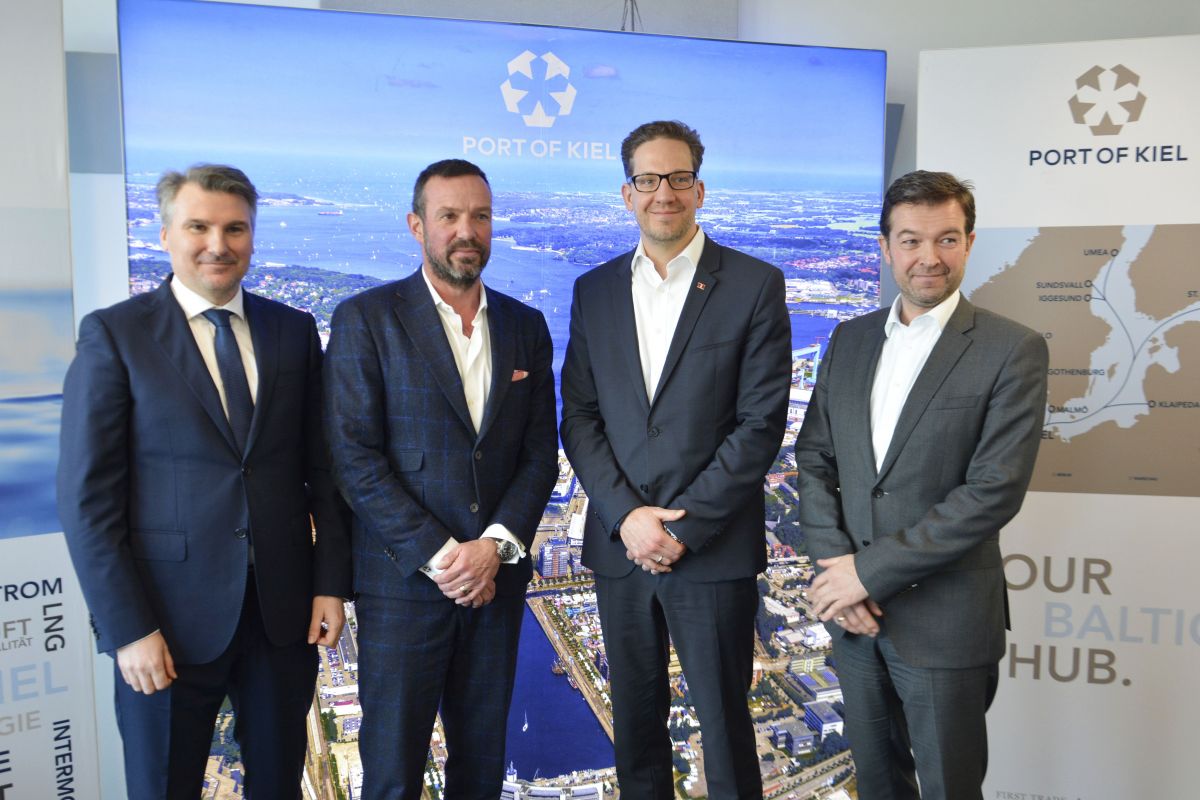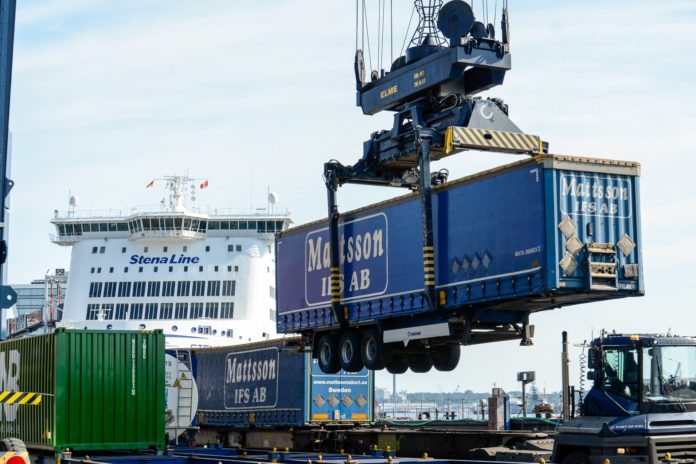The Port of Kiel says that it achieved a sound result last year with cargo increasing 1.9% to 6.8 million tons handled on the terminals operated by the Port.
In addition, there is the bulk cargo business at independent facilities so that all in all the 7 million ton mark could be affirmed despite the decommissioning of the local coal power station.
Dr Dirk Claus, Managing Director at the Port of Kiel commented:
“The port of Kiel was able to pursue its growth course in its core business areas – the ferry traffic and the cruise business sector. At the same time, the focus of our investments lies on the implementation of the BLUE PORT strategy – on the shore power plants and the intermodal traffic, so that the port of Kiel will be climate-neutral by 2030.”

Longer trains and new connections in intermodal transport
In the ferry traffic sector to Norway resp. West Sweden the service of an additional freight ferry has a positive impact on the Kiel – Oslo route whereas fewer unaccompanied trailers were transported between Kiel and Gothenburg last year.
Claus said, “In order to push the ecologically advantageous shift of transport units from the roads to rail and sea, some important infrastructural foundations could be laid last year. The investments by the German Railway at the shunting station Kiel allow for longer trains and new direct connections.”
Hence, trains with an overall length of 750m (55om before) can now enter the Rbf Kiel-Meimersdorf and a third shunting track is about to be completed at the Schwedenkai Terminal. At this terminal, no less than 25% of the hinterland transport units are transhipped by rail these days already. After nearly 24,000 load units were transhipped by rail last year this number is expected to increase to well over 32,000 this year.
At the end of 2019 an additional direct train link to Verona in Italy was established and at the start of this year a new connection to Bettembourg in Luxembourg was inaugurated, operating from the Schwedenkai Terminal. This direct connection will serve every direction three times a week with 740 m long trains. The Port of Kiel expects a transport volume of 8,000 units on this route alone this year.
Investments in terminal facilities and environmental protection
The Port of Kiel is currently investing nearly 30 million Euros in terminal facilities and environmental protection, according to the release. After the apron in Ostuferhafen was completely redesigned last year in order to optimize logistical processes and to create more space for trucks, trailers and passenger cars, the construction projects now focus on the city port.
However, the largest single investment of the Port of Kiel is the shore power supply plant for the Ostseekai and Schwedenkai terminals amounting to €13 million. Construction works at the shore power supply plant started last autumn and the structural as well as the civil engineering is currently in progress. The technical equipment will follow so that the power plant can start test operations still during the season.
“The shore power plant at the Ostseekai will be the first one to supply power both to a cruise ship and a ferry at the same time. It is our aim to supply shore-side power to 60 to 70 cruise ships during the first full operational year. In the future, 60% of the energy demand by the ships visiting Kiel is supposed to be met by shore-power from regenerative sources.”







